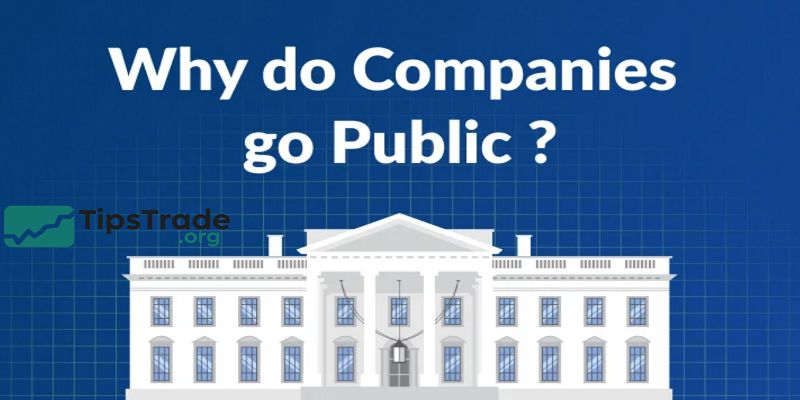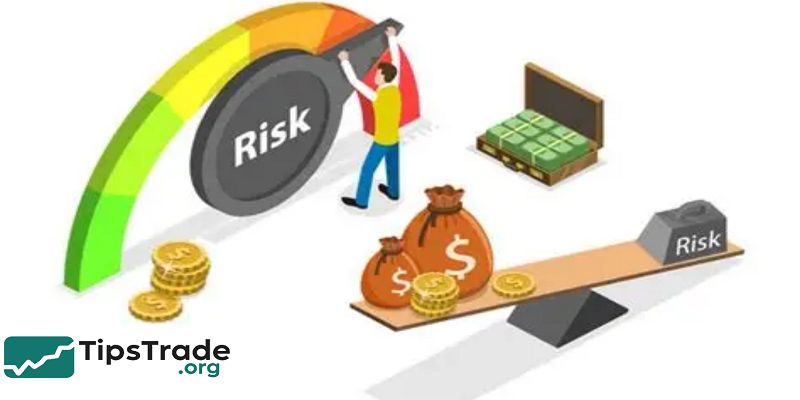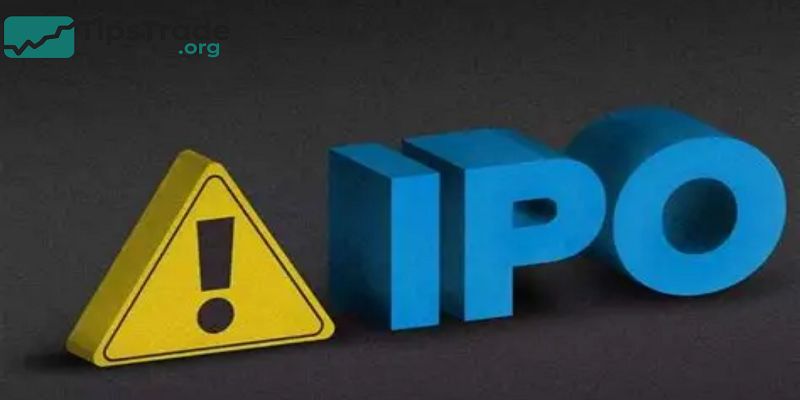IPO risks explained is for understanding the potential challenges and uncertainties investors and companies face when a private company decides to go public. Investing in an IPO carries risks such as high volatility in stock price immediately after listing, the possibility of overvaluation leading to price drops, and the uncertainty that shares may not be allotted to all applicants if the offering is oversubscribed. For a detailed understanding of these risks, you may also explore resources at Tipstrade.org which provide expert insights and comprehensive analysis on IPOs.
What Is an IPO and Why Do Companies Go Public?

- An Initial Public Offering (IPO) happens when a private company sells its shares to the public for the first time.
- It’s a big milestone — turning a private business into a publicly traded one.
- Companies typically go public to raise capital, expand operations, repay debt, or increase brand visibility.
- For example, Airbnb’s 2020 IPO raised over $3.5 billion, while Uber’s 2019 IPO generated $8.1 billion despite initial volatility.
- In return for going public, companies gain access to investors’ capital, but they also face higher regulatory scrutiny and market pressure.
- From an investor’s perspective, IPOs can be exciting because they offer the chance to invest early in potentially high-growth companies.
- However, it’s essential to remember that IPOs also carry significant risks — often hidden beneath the media buzz and investor hype.
- Understanding these risks is the first step toward making smarter investment decisions.
Understanding the Risks of IPO Investments

- Investing in an IPO is not the same as buying shares of an established company.
- IPOs represent unproven businesses in a public market, where their real market value is still uncertain.
- Unlike mature firms that have years of financial data, IPO companies are often young, untested, and volatile.
- They might show rapid growth but lack consistent profits. According to Bloomberg, nearly 60% of U.S. IPOs since 2010 traded below their offering price within the first year.
This means IPO investing carries unique risks:
- Information asymmetry: Retail investors often know less than institutional investors.
- Limited track records: Most IPO firms haven’t experienced market downturns as public entities.
- Price uncertainty: The initial price may not reflect true value due to hype or underwriter influence.
So while IPOs may seem like a ticket to early gains, they often test an investor’s patience and risk tolerance.Market Volatility and Price Fluctuations
One of the most visible IPO risks is extreme price volatility. When a company debuts on a stock exchange, its share price can swing dramatically within hours or days.
Take Coinbase’s IPO in April 2021 as an example. The stock opened at $381 per share, surged briefly, then dropped over 25% within a month.
This kind of volatility isn’t rare — it reflects a tug-of-war between buyers’ excitement and sellers’ caution.
Several factors drive this instability:
- Speculation and hype from early investors.
- Low supply vs. high demand in early trading sessions.
- Underwriter stabilization efforts, which may temporarily influence prices.
According to Nasdaq research, IPO stocks typically experience twice the volatility of S&P 500 stocks during their first 90 days.
This makes IPOs more suitable for investors who can handle short-term uncertainty and avoid emotional trading decisions.
Lack of Historical Data

- Another major risk of IPO investing is the lack of financial history. Private companies aren’t required to share detailed information until they file for an IPO.
- As a result, investors have limited data to assess profitability, debt, and management quality.
- When a company goes public, it must release a prospectus (Form S-1) — a legal document filed with the U.S. Securities and Exchange Commission (SEC).
- While the prospectus contains essential details about operations and risks, it’s often dense, complex, and optimistic in tone.
Without long-term records, it’s difficult to answer key questions:
- Has the company been profitable across different market cycles?
- How sustainable is its growth model?
- Are management’s projections realistic?
Investors should read beyond the headlines and dig into the S-1 filings on SEC.gov to understand financial fundamentals, not just the IPO price tag.
Overvaluation and Hype
- The excitement around a high-profile IPO can lead to overvaluation — when the stock price exceeds the company’s real worth.
- Investment banks, underwriters, and media coverage often contribute to the hype.
- The infamous WeWork IPO in 2019 is a classic case.
- The company was initially valued at $47 billion, but after investors scrutinized its financials and business model, the IPO was canceled, and the valuation collapsed to $8 billion.
This shows how marketing narratives can inflate expectations. When the truth emerges, early investors may face heavy losses.
To protect yourself:
- Compare IPO valuation with industry peers.
- Look for realistic revenue growth assumptions.
- Be wary of “hot” IPOs heavily promoted by banks or media.
As Morningstar analysts note, “If everyone is talking about a stock, you’re probably late to the party.”
Lock-Up Periods and Insider Selling
- When a company goes public, insiders (founders, executives, early employees) are often restricted from selling their shares for a specific period — typically 90 to 180 days, known as the lock-up period.
- Once that period expires, a flood of insider selling can drive down the stock price.
- According to MarketWatch, IPOs often see a 10–20% price dip shortly after the lock-up ends, as insiders cash out their early gains.
This dynamic reflects a natural shift: insiders want liquidity, while public investors reassess the company’s long-term value.
To manage this risk:
- Research the lock-up expiration date (available in the IPO prospectus).
- Avoid buying just before insiders are free to sell.
- Monitor trading volume around that period — it often signals coming volatility.
Limited Transparency and Disclosure Risks
While public companies must follow strict reporting standards, newly listed firms are still transitioning from private to public disclosure. That means early investors face limited transparency during the first few quarters.
Key risks include:
- Optimistic accounting before IPO listing.
- Non-GAAP metrics used to appear more profitable.
- Incomplete disclosure about lawsuits, debt, or governance issues.
A study by Harvard Business Review found that nearly one in four IPO filings had “material weaknesses” in internal controls.
This highlights how limited transparency can obscure true financial health.
Before investing, read the Risk Factors section of the company’s S-1 filing on SEC.gov — it often lists potential problems in plain language that marketing materials gloss over.
Underwriter and Market Manipulation Risks

- Every IPO involves underwriters — investment banks that help price and sell shares.
- Their goal is to ensure the IPO succeeds, but conflicts of interest can arise.
- Underwriters sometimes use techniques like price stabilization to prevent the stock from dropping below its offer price in the early days.
- While this creates the illusion of stability, it doesn’t reflect organic market demand.
- In some cases, investors may experience “flipping”, where shares allocated to institutions are sold immediately after listing for a quick profit — leaving retail investors holding overpriced shares.
- According to FINRA (Financial Industry Regulatory Authority), investors should review the underwriter’s track record and pricing method before buying into an IPO.
- Understanding who sets the price — and why — is essential to avoid being caught in short-term market manipulation.
Behavioral Risks – FOMO and Investor Psychology
- One of the most underestimated IPO risks isn’t financial — it’s psychological. The fear of missing out (FOMO) can push investors to buy stocks impulsively, especially when headlines promise “the next big thing.”
- Social media hype and celebrity endorsements can magnify this effect.
- During the Robinhood IPO in 2021, for instance, retail investors rushed in despite clear warnings about volatility. The stock fell over 70% within a year.
- Behavioral finance experts call this the “herd mentality” — when people follow the crowd instead of making rational decisions.
To avoid FOMO traps:
- Wait for post-IPO stability before investing.
- Focus on fundamentals, not trends.
- Set an entry price and stick to your plan.
As Warren Buffett famously said, “Be fearful when others are greedy, and greedy when others are fearful.”
Real-World Examples of IPO Risks
| Company | Year | Risk Outcome | Key Lesson |
| WeWork | 2019 | IPO canceled due to valuation issues | Overvaluation and poor governance |
| Rivian | 2021 | Shares dropped 60% after debut | Market hype vs. revenue reality |
| Facebook (Meta) | 2012 | Fell 30% after IPO, then recovered | Early volatility doesn’t define long-term value |
| Uber | 2019 | Down 40% post-IPO before stabilizing | Long-term profitability matters more than hype |
These cases show that IPO performance can vary drastically. Even strong brands can stumble initially if market expectations are unrealistic or fundamentals are weak.
Conclusion
IPOs are exciting but not risk-free. Behind every headline-grabbing debut lies uncertainty — from market volatility and insider selling to psychological biases like FOMO. The truth is, most IPOs underperform in their first year as markets adjust to real value.

